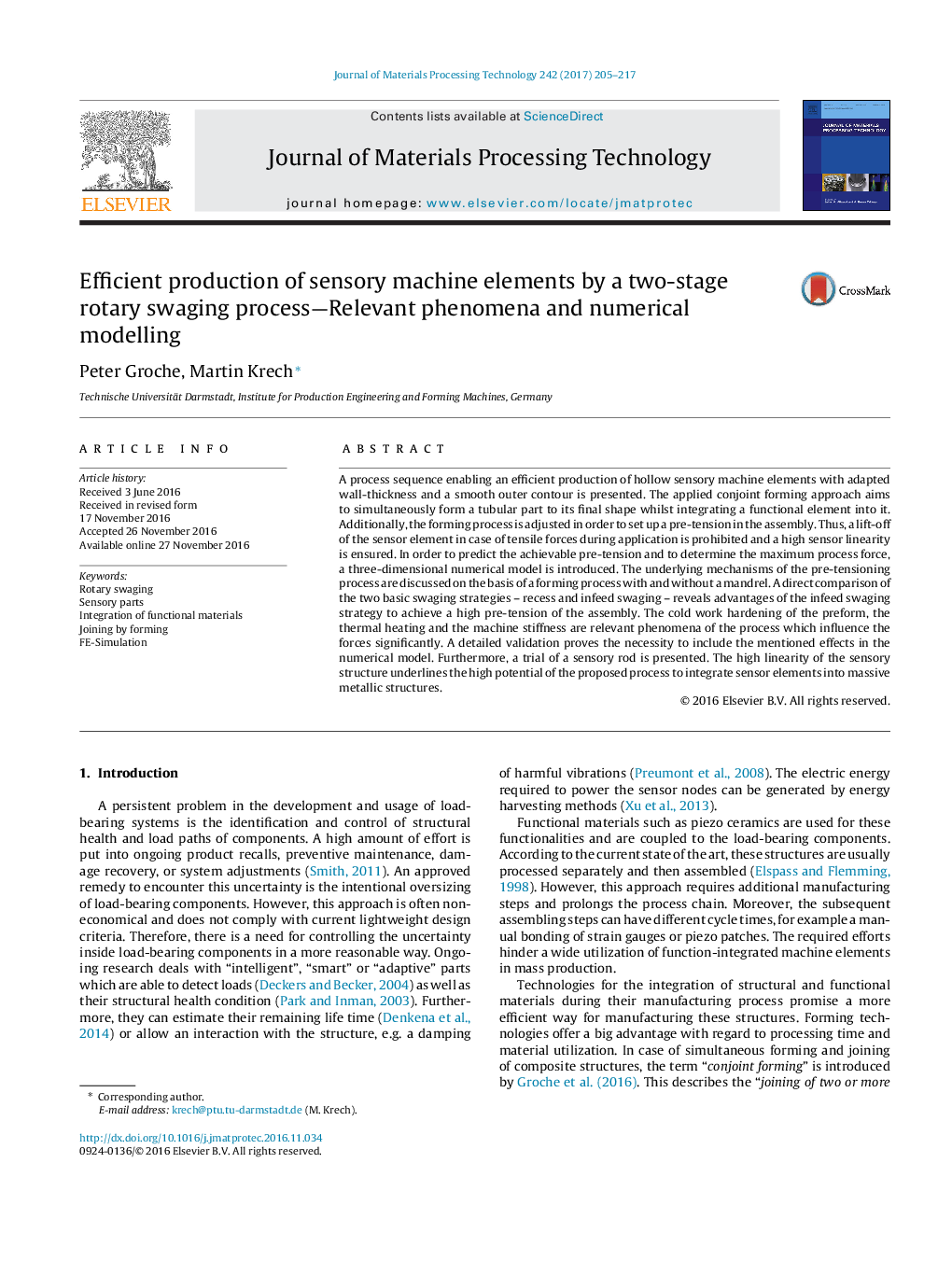| Article ID | Journal | Published Year | Pages | File Type |
|---|---|---|---|---|
| 5017816 | Journal of Materials Processing Technology | 2017 | 13 Pages |
Abstract
A process sequence enabling an efficient production of hollow sensory machine elements with adapted wall-thickness and a smooth outer contour is presented. The applied conjoint forming approach aims to simultaneously form a tubular part to its final shape whilst integrating a functional element into it. Additionally, the forming process is adjusted in order to set up a pre-tension in the assembly. Thus, a lift-off of the sensor element in case of tensile forces during application is prohibited and a high sensor linearity is ensured. In order to predict the achievable pre-tension and to determine the maximum process force, a three-dimensional numerical model is introduced. The underlying mechanisms of the pre-tensioning process are discussed on the basis of a forming process with and without a mandrel. A direct comparison of the two basic swaging strategies - recess and infeed swaging - reveals advantages of the infeed swaging strategy to achieve a high pre-tension of the assembly. The cold work hardening of the preform, the thermal heating and the machine stiffness are relevant phenomena of the process which influence the forces significantly. A detailed validation proves the necessity to include the mentioned effects in the numerical model. Furthermore, a trial of a sensory rod is presented. The high linearity of the sensory structure underlines the high potential of the proposed process to integrate sensor elements into massive metallic structures.
Related Topics
Physical Sciences and Engineering
Engineering
Industrial and Manufacturing Engineering
Authors
Peter Groche, Martin Krech,
